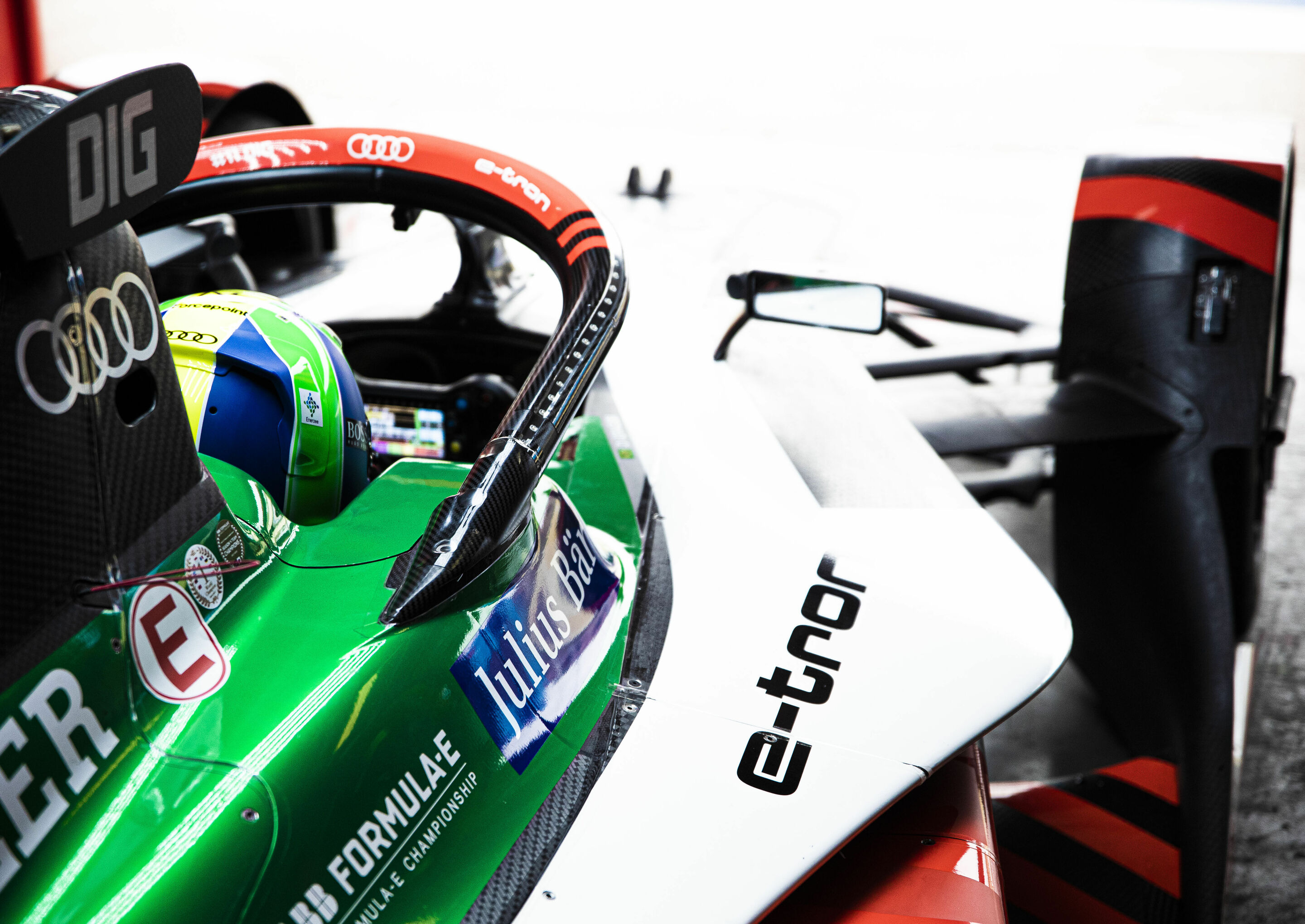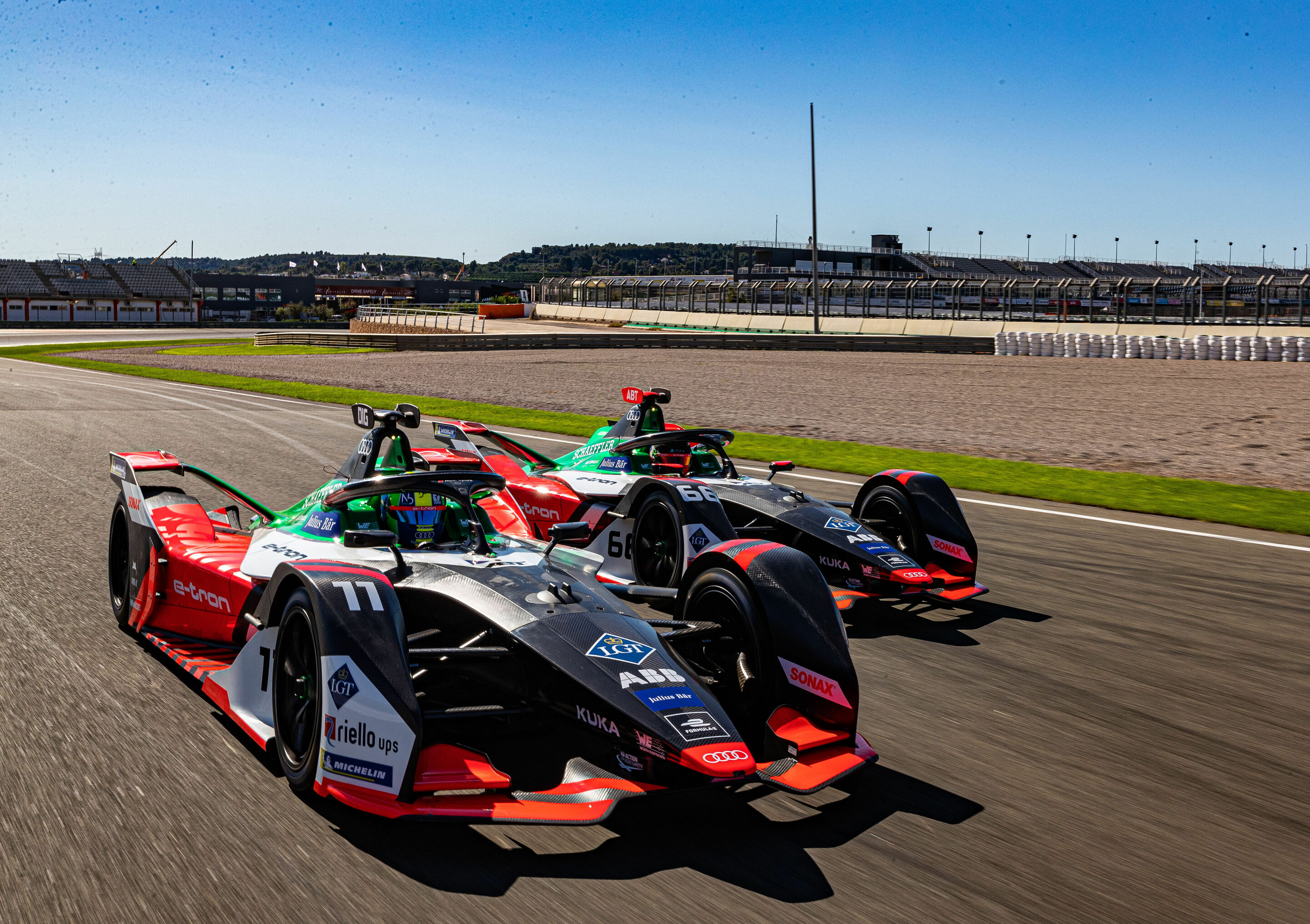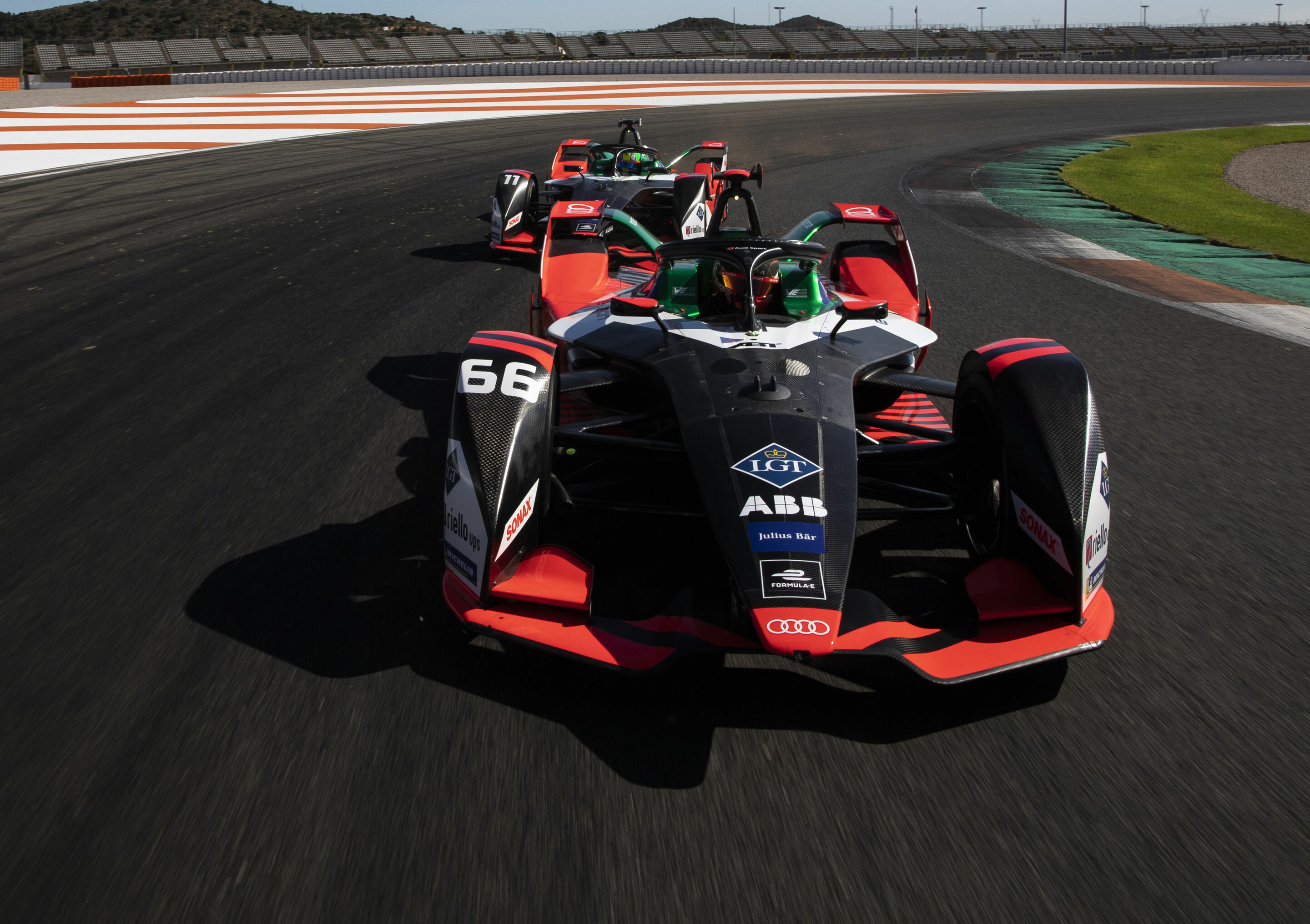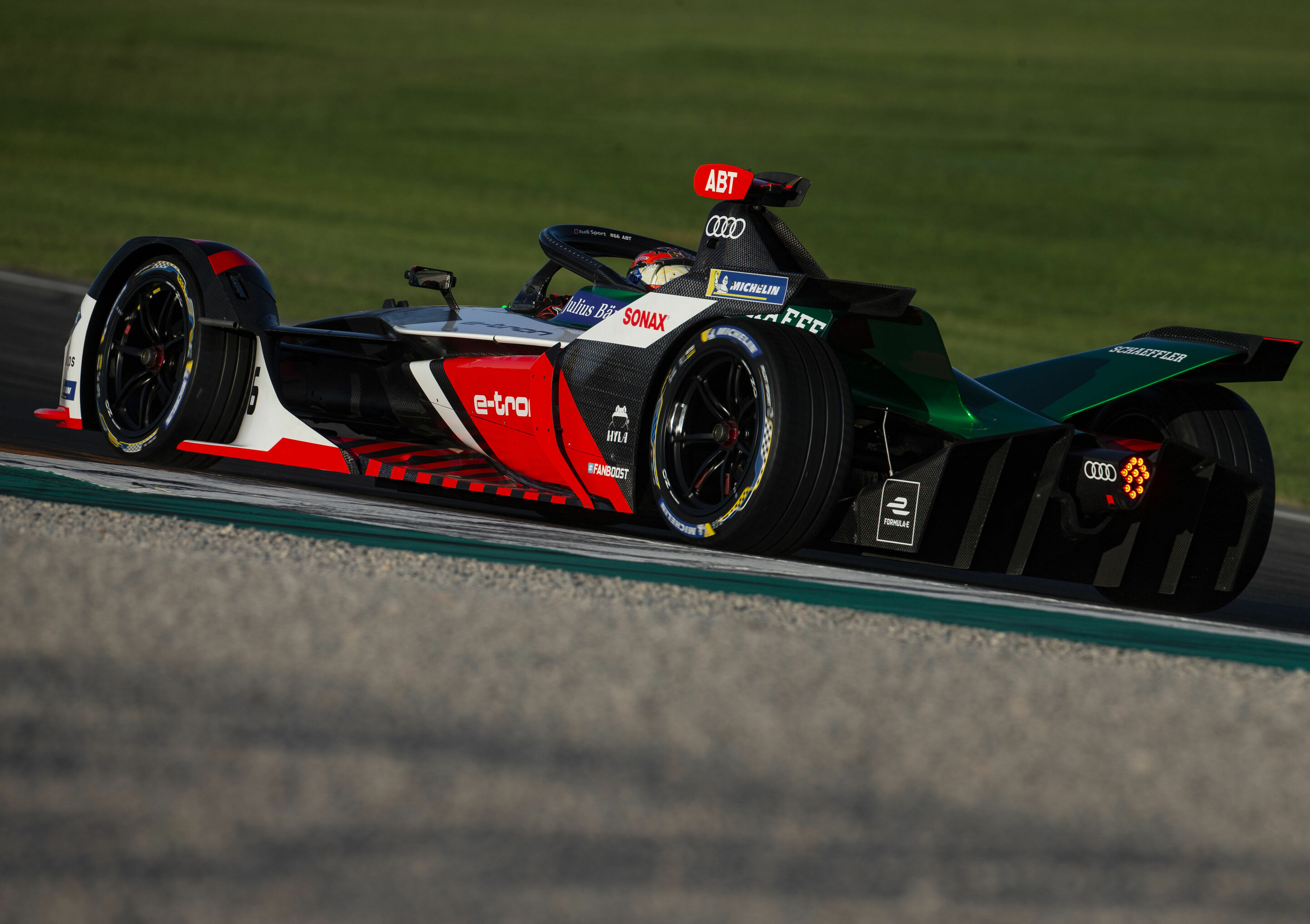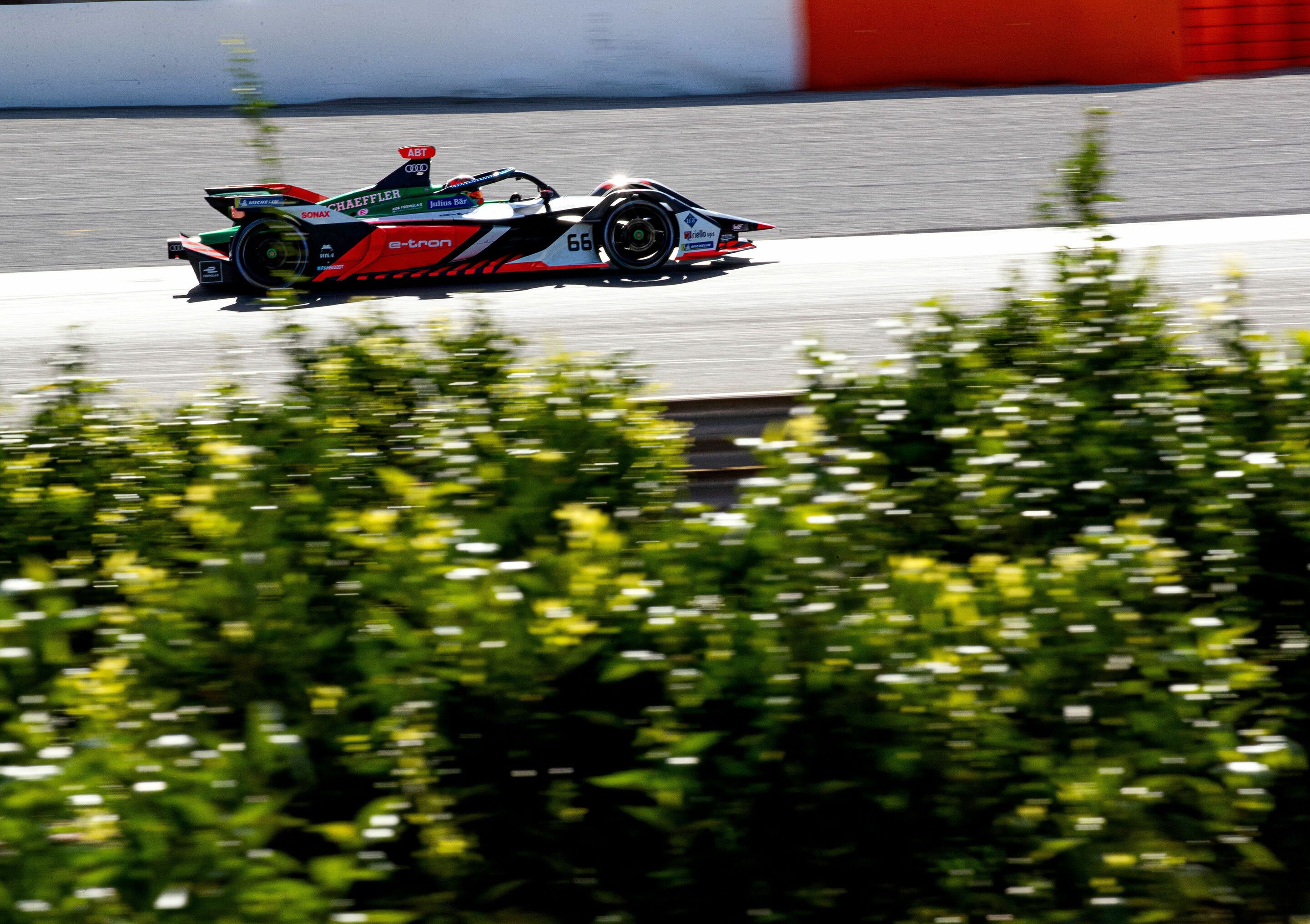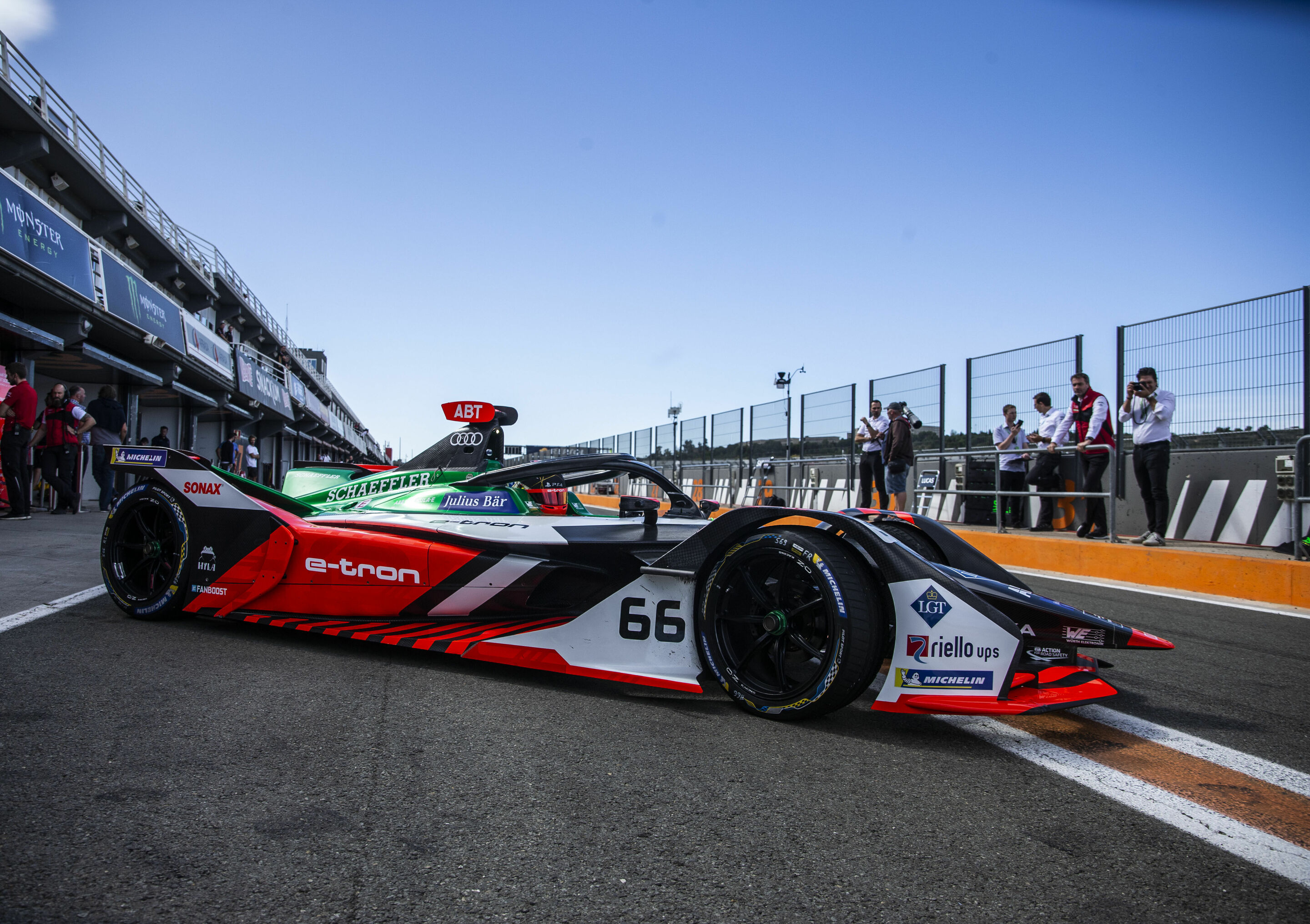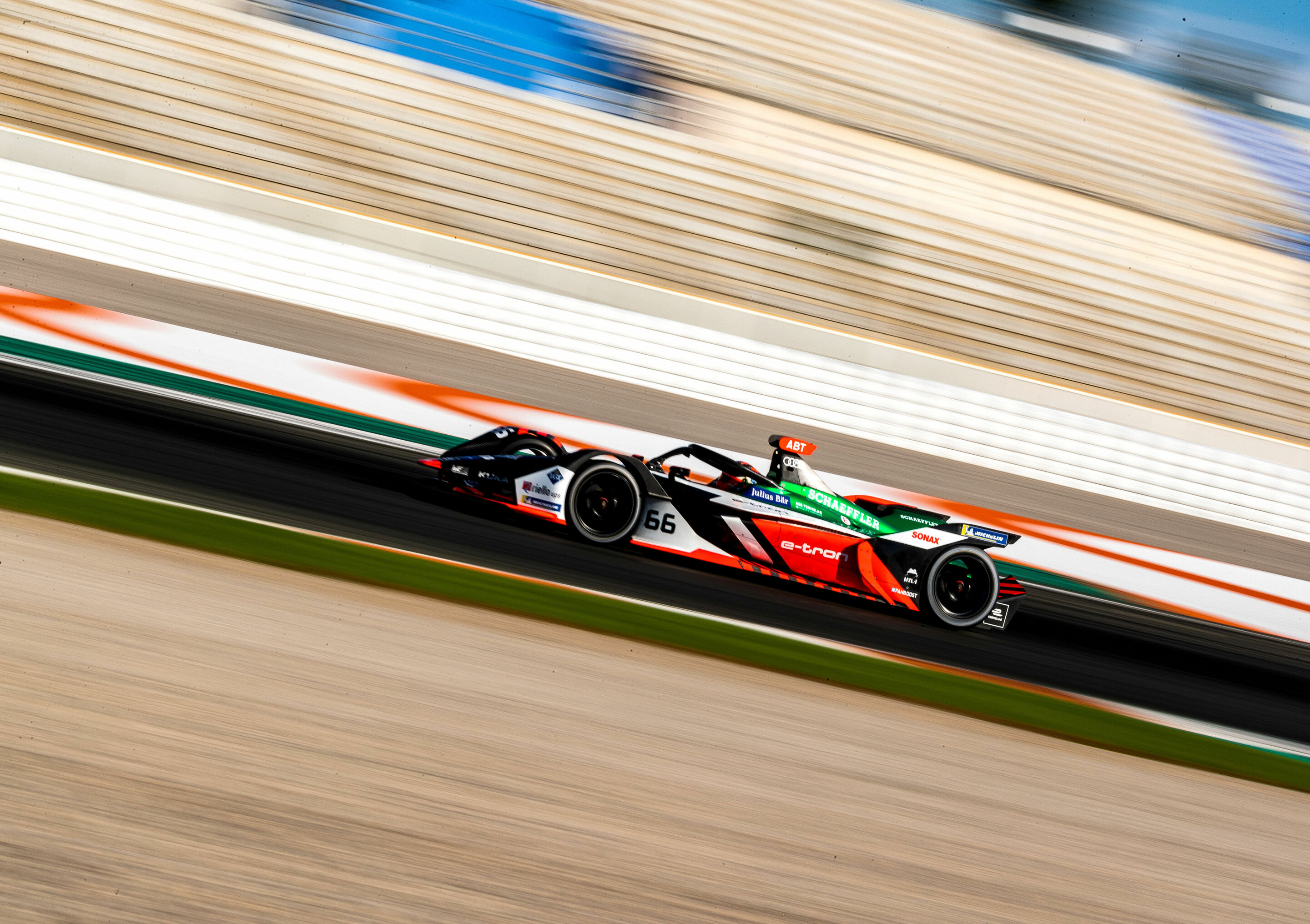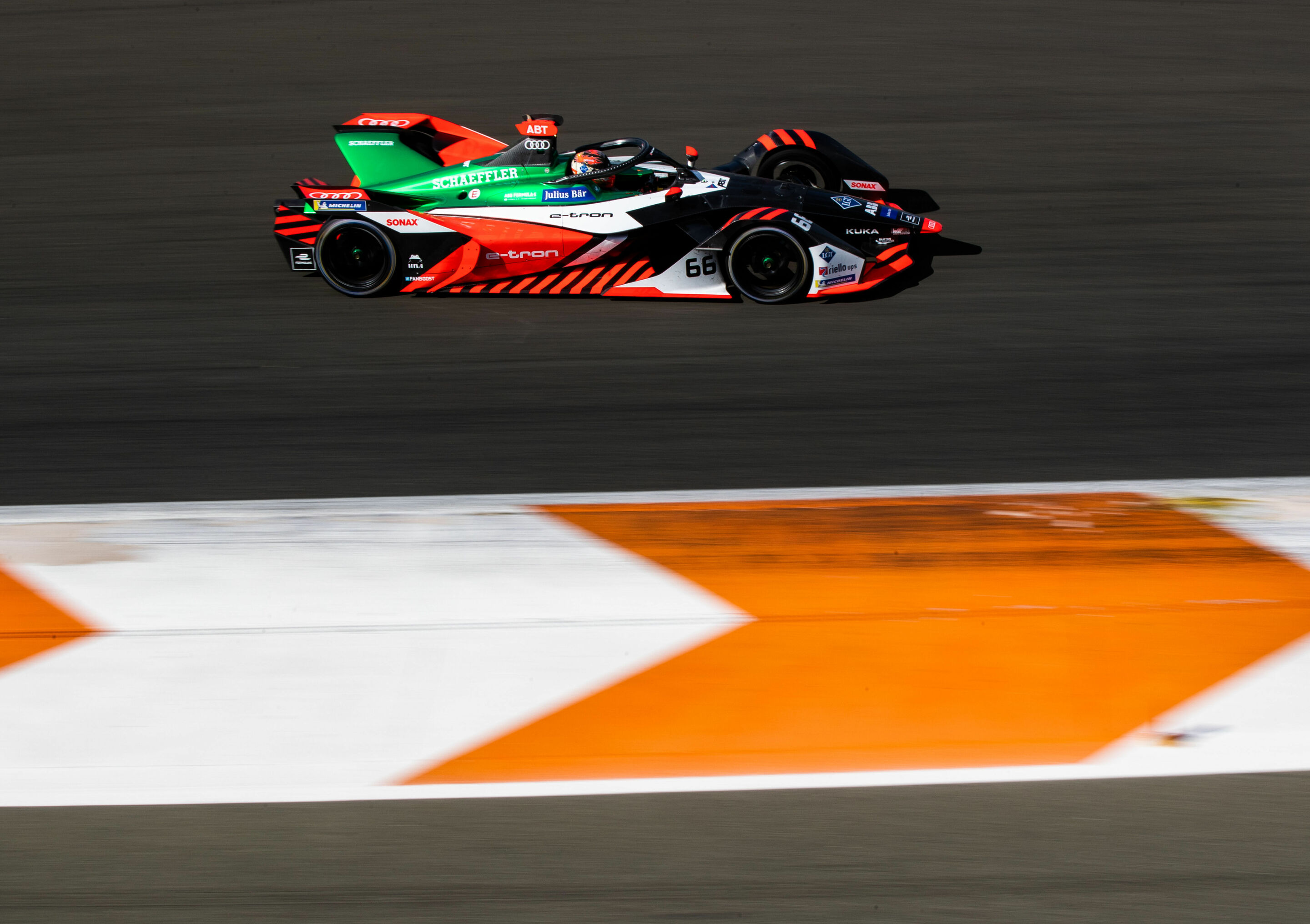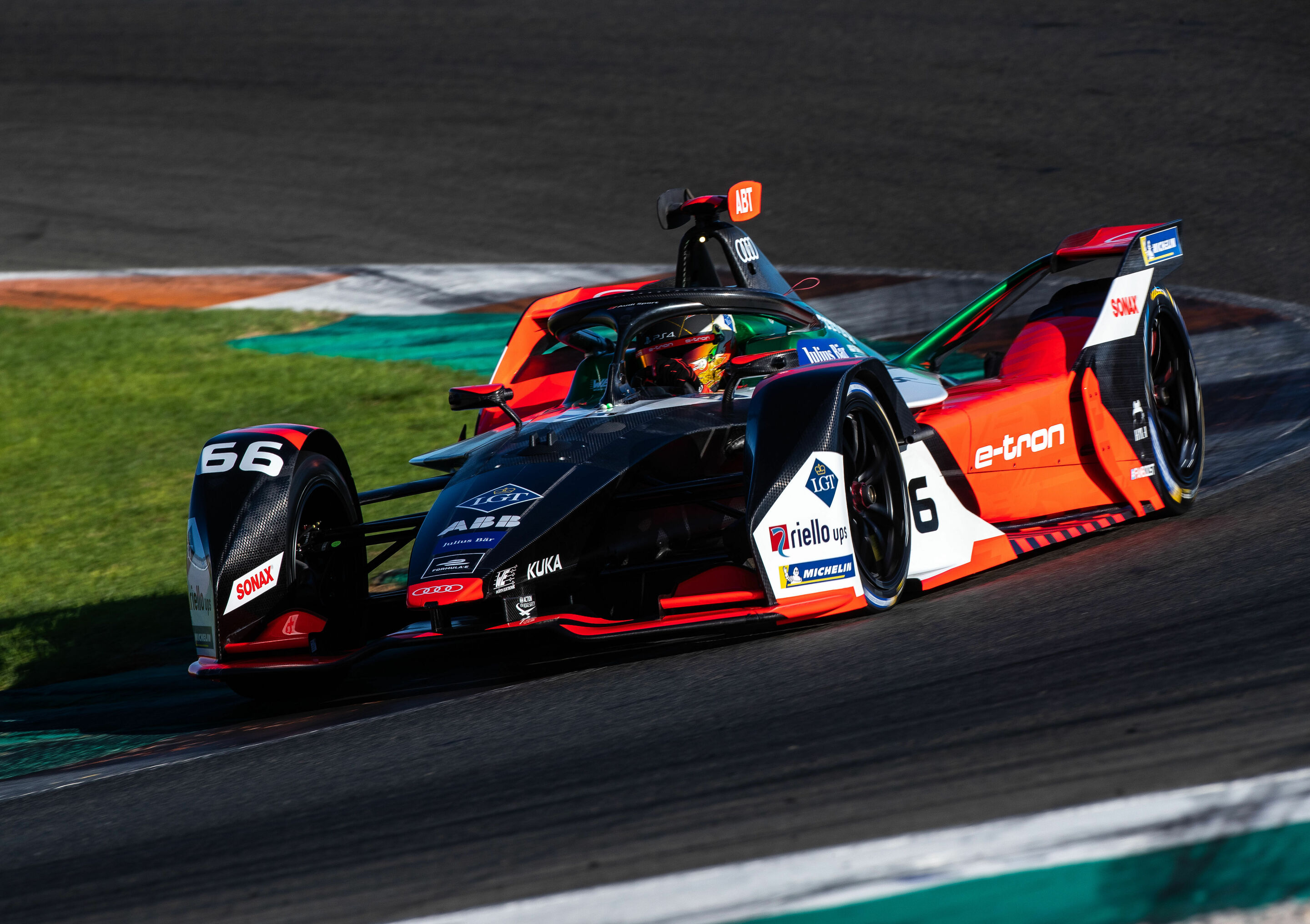Audi e-tron FE06: Detailed work for every crucial tenth
Back to overviewEvolution instead of revolution: Audi looked at every single detail in the development of the Audi e-tron FE06. The results: even higher efficiency, less weight, optimized packaging and enhanced operability of the software. In addition, tests and perfected simulations are important elements on the way to a perfect race day.
The tight regulations of Formula E are both a blessing and a curse: a blessing because they are conducive to the utmost competitiveness of the teams and the car concepts, which guarantees gripping racing, and a curse because new developments entail meticulous and detailed work for the engineers: the perfect challenge for Tristan Summerscale and his team. The Formula E Project Leader at Audi says: “If we optimize each of the 2,000 pieces of the puzzle just a little bit, we may be gaining the crucial tenth of a second in the end.”
Besides the software, the powertrain is the only area of the Formula E car that the manufacturers are allowed to freely develop. It consists of the motor, inverter, transmission and parts of the rear suspension. As in the previous years, the motor generator unit, named the Audi Schaeffler MGU04, has been jointly developed by Audi and technology partner Schaeffler. “With energy conversion efficiency in the range of more than 90 percent, we’re already at the limit in terms of efficiency. Even so, just like with the dynamics of the MGU and the inverter, small steps were still possible,” says Tristan Summerscale.
The engineers achieved a further weight reduction of the powertrain and the optimization of the packaging, which refers to the arrangement and accessibility of the individual components. “The schedule on a Formula E race day is extremely tight: there’s not much time for driving and the breaks between the various sessions are usually short,” says Summerscale. “So the speed at which the mechanics are able to make changes, for instance to kinematics or dampers, or repairs in the event of damage, may be decisive. We’ve made good progress in this area.”
In the sixth season of Formula E, the motor may deliver a maximum power output of 250 kW (340 hp) in qualifying. In the races, output is limited to 200 kW (272 hp). The attack mode has proven successful: when a driver passes the activation zone on the race track, the power output of his car is briefly boosted to 235 kW (320 hp). Formula E fans will be able to support their favorite drivers again by voting online this season: “FanBoost” provides a short-term boost to 250 kW (340 hp) in the race.
All of the Formula E teams draw their power from identical 385-kilogram batteries supplied by McLaren. The lithium-ion battery sits between the driver’s seat and the powertrain, has an available capacity of 52 kWh and is recharged within 45 minutes. New since the fifth season has been the brake-by-wire system, in which brake actuation and transfer to the rear axle are isolated from each other and electronically controlled. As a result, brake force distribution is always optimally adjusted and recuperation even more efficient.
Like in Formula One, the driver sits in a carbon fiber monocoque, developed according to FIA safety standards. CFRP crash structures at the front and rear ensure maximum safety. As is the case in Formula One, the Halo system is also utilized above the cockpit, which additionally protects the driver’s head. The minimum weight of a Formula E race car is 900 kilograms (including the driver). The electric race car accelerates from 0 to 100 km/h in 2.8 seconds. The top speed on a Formula E track is around 240 km/h.
Quality instead of quantity – this was Audi’s goal for the tests held before the sixth season. “We prepared a very precise task list and checked off all the items on it,” says Summerscale. Daniel Abt and Lucas di Grassi were actively involved in this effort in Germany, Southern Europe and Scandinavia in recent months: on a selection of tracks reflecting the enormous temperature differences in Formula E – from cool Paris to hot Santiago de Chile – as well as the diversity of track versions. Summerscale: “During the pre-season tests, we had the opportunity to simulate particularly important or special sections awaiting us during the season and to prepare ourselves very systematically in that way.”
In addition to the work in development, on the test bench or during tests on race tracks, simulation plays an important role in Formula E. The reason is that from October 31, the regulations impose a stop on pre-season testing, and practice sessions on the temporary city street circuits are not possible either. Consequently, the preparation for the race day takes place in the ultra-modern simulator at the headquarters in Neuburg – in a Formula E chassis, surrounded by monitors and a more than 240-degree wide screen for all-round vision. For the coming Formula E season, the hardware and software have been optimized by an update once again. Thus, the movements of the monocoque and the visualization of the track simulation are coming increasingly closer to reality.
The practice is not only essential for the preparation of the drivers. “Our engineers can gather a lot of important data during this time, optimize energy management, test different software versions and go through the process of a race day,” says Tristan Summerscale: all in pursuit of the single goal of finding the crucial tenth of a second that may ultimately make the difference between victory and defeat.
